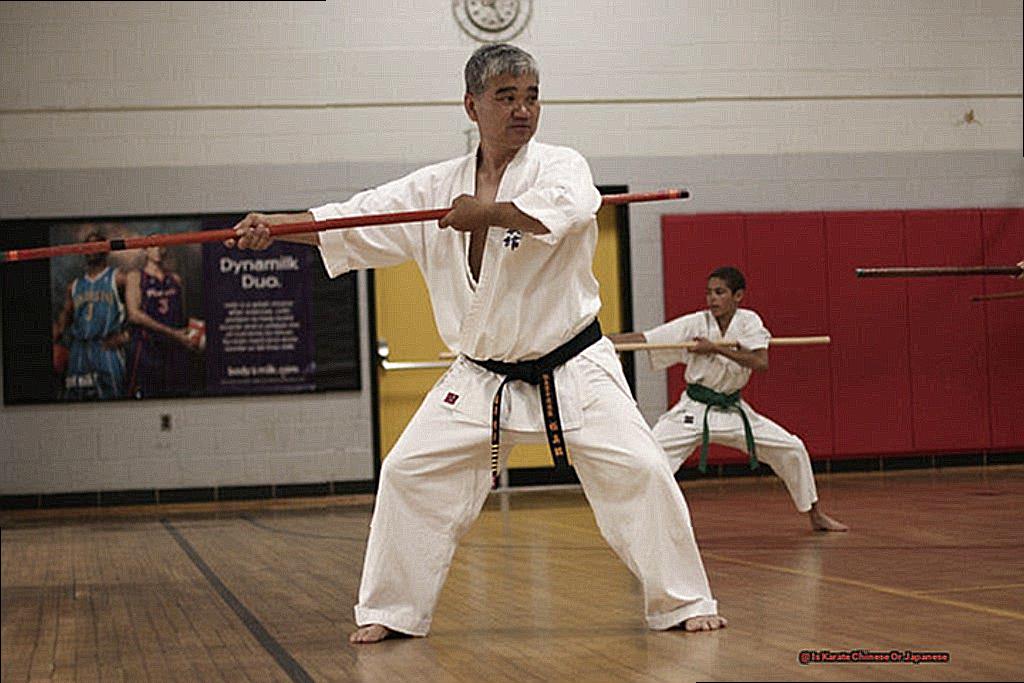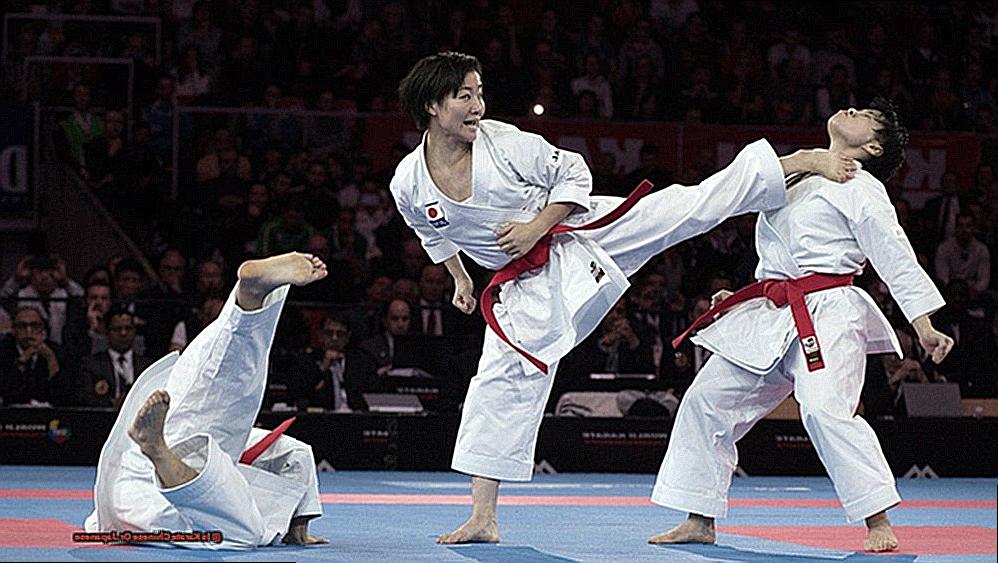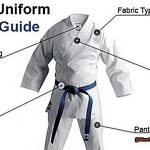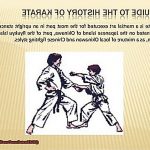Welcome to our blog, where we delve into the captivating world of karate and its intricate cultural origins. This centuries-old martial art has mesmerized people worldwide with its dynamic techniques and deep-rooted customs. From its humble beginnings in Okinawa, Japan to its widespread popularity today, karate has evolved into a beloved sport and a way of life for many. In this post, we will embark on a journey through history to explore the question: is karate Chinese or Japanese? So put on your gi and get ready to discover the roots of this powerful martial art. Here’s what you can expect to learn:
- The ancient origins of karate in Okinawa
- The influence of Chinese martial arts on early forms of karate
- The impact of Japanese occupation on the development of modern karate
- How karate was introduced to the Western world
- The cultural values embedded in the practice of karate
- The evolution of different styles within karate
Get ready to uncover the fascinating story behind how this traditional art form became a global phenomenon. Let’s begin.
Origins of Karate
Karate, a martial art that has stood the test of time, originated in ancient China and was heavily influenced by Chinese martial arts. As it made its way to Okinawa, Japan, it underwent refinement and development, shaping it into the discipline we know today. The fascinating history and evolution of Karate are explored below.
| 7th century | Karate first took shape in Okinawa, Japan | It was influenced by Chinese martial arts and was referred to as ‘China Hand’ |
| 19th century | Karate spread to mainland Japan | Its popularity grew across Japan with the establishment of multiple schools and styles |
| Mid-20th century | Karate gained worldwide recognition | Several new styles emerged, including Kenpo Karate and Kobudo |
| 1949 | The Japan Karate Association was formed | Karate became an institutionalized martial art recognized globally |
| 2021 | Karate made its debut as an Olympic sport at the Tokyo Games | New rules and regulations were implemented for WKF-regulated competitions, with a focus on technique rather than full-contact strikes |
| Present day | There are four main styles of Karate practiced in dojos worldwide: Goju-Ryu, Shotokan-Ryu, Wado-Ryu, and Shito-Ryu. Each style has its own unique techniques and characteristics. | Karate continues to evolve with new techniques and styles emerging, while also gaining recognition as an effective martial art in full-contact situations. |
As time passed, Karate evolved into a multifaceted and intricate martial art, all while staying true to its core values of discipline, respect, and self-improvement. Its journey from ancient China to the modern world has been shaped by various influences and developments, resulting in a rich and dynamic history.
Early Development of (Kara)Te
The earliest development of Karate can be traced back to ancient China, where it was heavily influenced by the Chinese martial arts that were brought over by the Buddhist monk Bodhidharma.
Eventually, it underwent further refinement and gained popularity in Japan.
The Beginning of Modern Karate
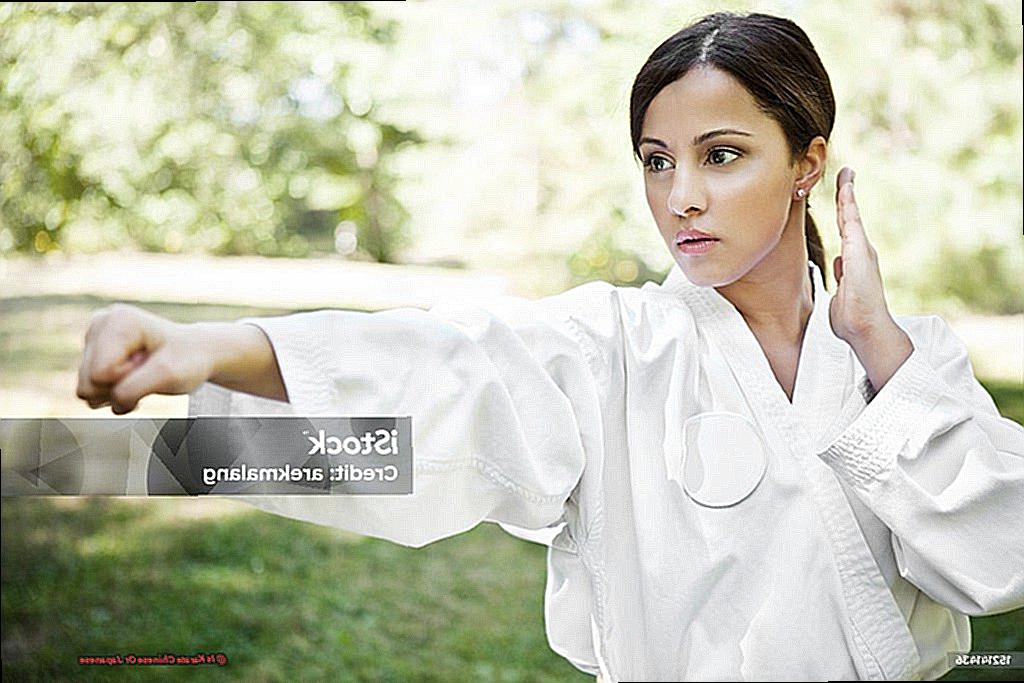
The history of Karate is steeped in culture and diversity, tracing back to ancient China. It was initially created as a means of self-defense and has since flourished into a popular martial art in both Chinese and Japanese societies.
The Emergence of Modern Karate
Karate, which translates to “empty hand,” first originated in China under the name Kung Fu. It was heavily influenced by the teachings of Bodhidharma, an Indian Buddhist monk who introduced the concept of physical and mental discipline to the Shaolin Monastery. From this influence, Kung Fu was born and eventually spread to other parts of Asia.
Advancements in the Ryukyu Kingdom
Through cultural and economic exchanges, Kung Fu made its way to the Ryukyu Kingdom (now known as Okinawa), where it was referred to as “Tode” or “Te.” Initially utilized as a system of self-defense, Tode gradually evolved into a refined martial art that was widely embraced by the residents of Okinawa.
Significance in Japanese Culture
In the late 1800s, Okinawa became part of Japan, bringing with it the introduction of Tode. The Japanese were captivated by this distinctive martial art and started incorporating it into their own fighting styles. In the 1920s, Karate (as we know it today) was introduced to mainland Japan, quickly gaining popularity amongst both civilians and military personnel.
Progression into a Contemporary Martial Art
As Karate continued to spread throughout Japan, various styles and schools emerged, each with its own techniques and philosophy. In 1957, the Japanese government officially recognized Karate as a martial art, cementing its place in Japanese culture.
Presently, Karate is practiced globally and continues to evolve as new techniques are developed.
Three parts of Karate
Karate is a multifaceted martial art that encompasses personal development, fun, and self-defense. Each element plays a crucial role in shaping the practice and philosophy of Karate.
Personal Development:
At its core, Karate is not just about physical prowess but also spiritual growth. Through rigorous training and discipline, practitioners are able to push their physical and mental boundaries, building strength, agility, endurance, focus, and discipline. This personal transformation extends beyond the training mat and into everyday life, empowering individuals to become more confident, resilient, and self-aware.
Fun:
Despite its serious traditions and philosophies, Karate also offers a sense of enjoyment and camaraderie. The physical movements and techniques of Karate can be both challenging and exhilarating, providing a sense of accomplishment and fulfillment. Additionally, many people are drawn to Karate for its strong social aspect, creating a community of like-minded individuals who share a passion for the art.
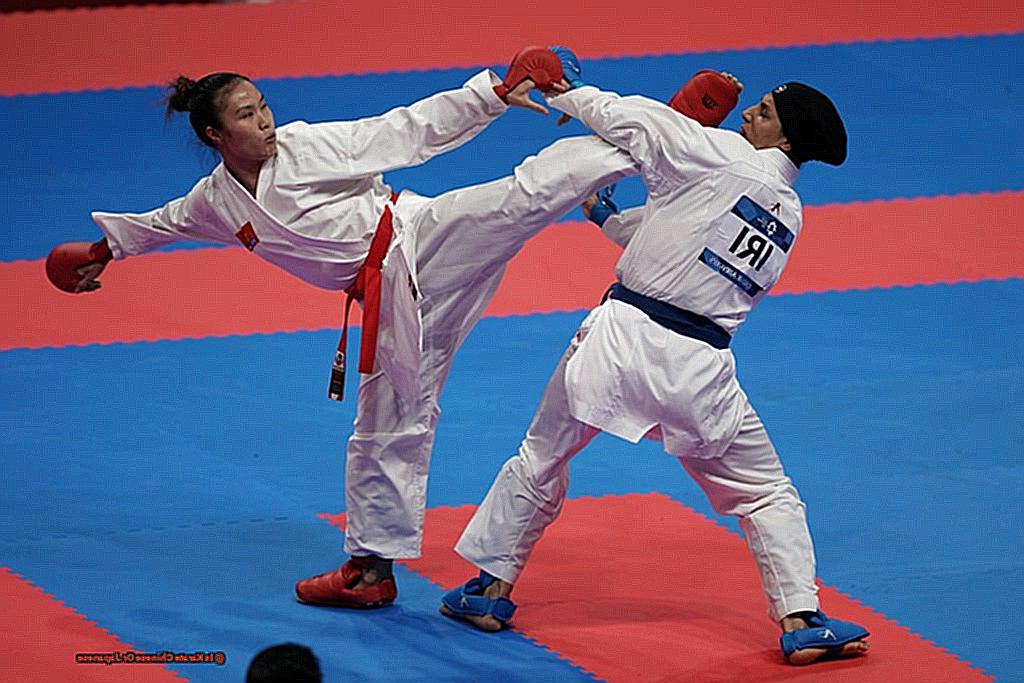
Self-Defense:
A key aspect of Karate is equipping practitioners with practical skills for self-defense. With its focus on strikes, blocks, and kicks, Karate teaches effective techniques for defending oneself in dangerous situations. However, self-defense in Karate goes beyond just physical techniques – it also instills situational awareness, risk assessment, and conflict resolution skills.
Together, these three components work together to create a well-rounded practice that promotes physical and mental well-being, fosters a sense of community and enjoyment, and provides valuable skills for self-defense.
Institutionalizing Karate As A Sport
Karate has a long and diverse history, shaped by cultural influences that have led to its institutionalization as a sport in both Chinese and Japanese cultures. While its roots can be traced back to Chinese martial arts, it wasn’t until the late 19th century that karate gained widespread popularity in mainland Japan and began its journey towards becoming an established sport. In both countries, karate has been wholeheartedly embraced and promoted through organized governing bodies, standardized rules, and widespread practice in schools and universities. This has resulted in its recognition as an Olympic sport and it continues to hold cultural significance in both Chinese and Japanese societies.
The origins of karate are deeply intertwined with Chinese martial arts, which have been practiced for centuries. However, it was not until the late 1800s that karate gained widespread recognition in mainland Japan. This was largely due to the efforts of dedicated individuals who worked towards promoting and popularizing the sport. Through their persistence and passion, karate gradually became an established sport in both China and Japan.
In order to ensure the growth and development of karate as a sport, organized governing bodies were established in both countries. These bodies helped to standardize rules and regulations for competitions, ensuring fairness and consistency. Additionally, karate gained popularity through its inclusion in school curriculums and university programs, providing opportunities for young athletes to learn and practice the sport.
Today, karate is recognized as an Olympic sport, further solidifying its position as a global phenomenon. Its cultural significance remains strong in both Chinese and Japanese societies, with practitioners continuing to uphold traditional values while also embracing modern techniques.
Karate Today
Karate Today has undergone significant evolution throughout history, from its origins in ancient Chinese martial arts to its worldwide popularity today. As it spread across different regions and cultures, the art has adapted and changed, resulting in a multitude of styles and techniques. Traditional Chinese and Japanese styles of Karate have distinct differences that are discussed below.
| Traditional Chinese Style | Traditional Japanese Style |
| Emphasizes the use of circular movements and fluidity in its techniques. | Focuses on powerful and direct linear movements. |
| Incorporates grappling, joint locks, and throws into its practice. | Primarily utilizes striking techniques. |
| Puts emphasis on internal energy and breathing techniques. | Favors external strength and physical conditioning. |
| Utilizes a wider range of stances and footwork. | Mainly relies on a low, wide stance for stability and power. |
| Incorporates elements of Taoism and Buddhism into its philosophy. | Incorporates principles of Bushido, the samurai code. |
| Uniforms (Gi) may vary in color and design. | Uniforms (Gi) are typically white with colored belts to indicate rank. |
| Training may include the use of weapons such as swords or staffs. | Focused on empty-hand techniques. |
| Techniques are often more fluid and circular, with less emphasis on power and speed. | Techniques are more direct and linear, with a focus on speed and power. |
| Examples of Chinese styles: Wing Chun, Tai Chi, and Shaolin Kung Fu. | Examples of Japanese styles: Shotokan, Goju-Ryu, and Wado-Ryu. |
Despite the clear distinctions between traditional Chinese and Japanese styles of Karate, they have both been influenced by each other over time. In modern Karate practice, it is not uncommon to see elements of both styles incorporated.
Karate vs. Other Martial Arts
Karate stands out among other martial arts due to its fascinating origins and cultural influences. This can be attributed to its evolution from ancient Chinese martial arts and its incorporation of Okinawan culture and Japanese philosophy. Although its roots can be traced back to China, it was in Okinawa where it flourished and evolved into the distinct techniques and styles that we know today.
Furthermore, the cultural influences of both Chinese and Japanese traditions are evident in the techniques, philosophy, and values of karate, setting it apart from other martial arts that have their own unique origins and cultural influences.
The journey of karate began in China, where it was initially developed as a form of self-defense. However, it was in Okinawa where it truly flourished, adapting and evolving into its own unique style. This fusion of Chinese martial arts with Okinawan culture resulted in the birth of karate. The incorporation of Japanese philosophy further shaped the development of karate, emphasizing the importance of discipline, respect, and humility.
The diverse cultural influences on karate are reflected in its techniques, which range from powerful strikes to intricate grappling maneuvers. These techniques, along with the philosophy behind them, set karate apart from other martial arts. Additionally, the values instilled in practitioners of karate go beyond physical strength and technique; they also encompass mental fortitude and character development.
As a result of its multifaceted origins and influences, karate has a rich history and cultural significance that makes it a truly unique martial art.
Conclusion
In conclusion, the fascinating world of karate traces its origins back to ancient Chinese martial arts and has since evolved into a beloved sport and way of life for many.
From its humble beginnings in Okinawa, Japan to its widespread popularity today, karate has been heavily influenced by both Chinese and Japanese cultures. Through rigorous training and discipline, practitioners not only develop physical strength but also spiritual growth.
The evolution of karate can be seen through its various styles and techniques, as well as its institutionalization as a sport in both China and Japan. What sets karate apart from other martial arts is its unique blend of cultural influences and values such as discipline, respect, and self-improvement.
As it continues to evolve with new techniques and styles emerging, karate remains a global phenomenon that promotes physical and mental well-being while also instilling valuable skills for self-defense. Its journey from ancient China to the modern world is a testament to the rich history and cultural significance embedded in this traditional art form.
It is truly a timeless practice that transcends borders and unites people from all walks of life in their pursuit of self-improvement.

